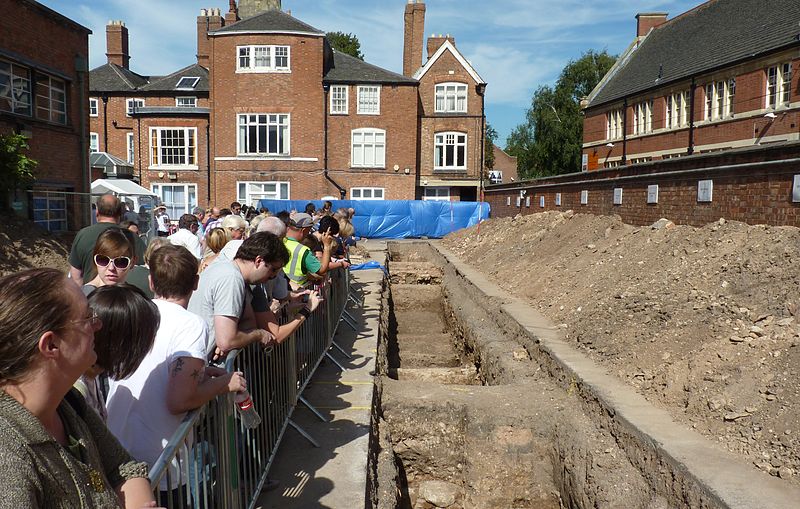Forensic Case Files: Richard III's Remains Finally Found in Leicester?
/ Richard III, who ruled England from 1483 to 1485, was the last of the legendary Plantagenet line that included such rulers as Henry II, Richard the Lionheart (Richard I), John Lackland (John of England), and Edward Longshanks (Edward I). His death in 1485 during the Battle of Bosworth Field ended the historic War of the Roses between the Houses of York and Lancaster, and led to the reign of the House of Tudor when Henry VII became king.
Richard III, who ruled England from 1483 to 1485, was the last of the legendary Plantagenet line that included such rulers as Henry II, Richard the Lionheart (Richard I), John Lackland (John of England), and Edward Longshanks (Edward I). His death in 1485 during the Battle of Bosworth Field ended the historic War of the Roses between the Houses of York and Lancaster, and led to the reign of the House of Tudor when Henry VII became king.
Richard III’s rise to power was somewhat unexpected. Following the death of his brother, Edward IV, Richard was named as Lord Protector for England for his nephew, 12-year old Edward V. But when Edward IV’s marriage to Elizabeth Woodville was called into question and then invalidated because of Edward IV’s previous and binding legal contract to marry another woman, Edward V was declared illegitimate and Richard III came to power.
Richard III may be best known for his part in what is now known as the ‘Princes in the Tower’—the disappearance of Edward IV’s two sons from the Tower of London in 1483, shortly after Richard was crowned king. We’ll examine the forensic evidence concerning the princes in our next Forensic Case File.
On August 22, 1485, Richard led a cavalry charge into the thick of his enemy’s forces in an attempt to strike directly at Henry Tudor. Legend says that he came within feet of Henry before being surrounded and struck down by a poleaxe blow so violent, it drove his helmet into his skull. Richard’s naked body was then brought to Leicester where it was first put on display, and then buried at Greyfriars Church. The exact location of the burial was lost to time following the church’s demolition in 1536 and later development of the area.
But members of the Richard III Society, the University of Leicester Archeology Department and the Leicester City Council undertook to find Richard’s remains. On August 25, 2012 it was announced that three trenches had been dug under a municipal parking lot, uncovering not only the original walls from the cloister and church, but a single set of human remains buried near the altar. But are these Richard’s remains?
At this point, forensic anthropologists have collected strong circumstantial evidence. The remains belong to a battle-scarred adult man, seemingly buried without clothes, with an arrowhead lodged between two vertebrae and a horrible gash in the skull. But most telling is the curvature of the spine from scoliosis which would have resulted in the living man standing with one shoulder higher than the other. Richard III was rumoured to be a hunchback (as portrayed by Shakespeare) but it is unlikely such an accomplished soldier would have such a severe disability. But a mild curvature of the spine might account for the seed of what later became legend.
Forensic anthropologists hope to definitively identify the remains using mitrochondrial DNA, a type of DNA passed down through the generations via the maternal bloodline. Three Canadians from London, Ontario are the only remaining relatives of Richard III through the maternal line and their DNA will be tested against samples taken from the femur and molars of the remains. Scientists are hopeful of a match, but the age of the samples and the resulting quality of the DNA is a concern. They hope to have a definitive answer within the next three months.
Next week, in our next Forensics 101 post, we’re going to examine how mitrochondrial DNA can be used to identify the dead by comparing their sequences to those of their living relatives.
Photo credit: Wikimedia Commons




 30.8%
30.8%